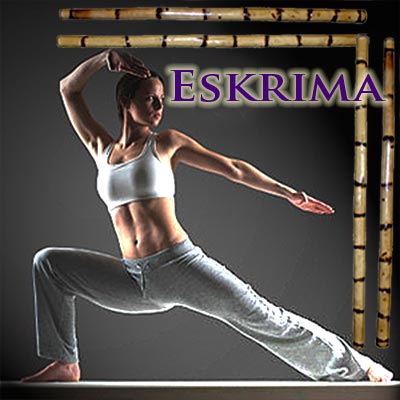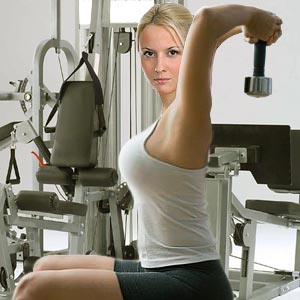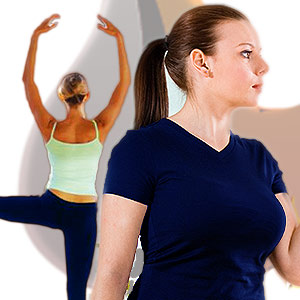Eskrima Workout

The national sport of Philippines, this martial art form is called Eskrima in the central islands, Arnis in the northern islands and Kali in the southern islands of Philippines. Kali is the name used for eskrima in USA and Europe. It is also known as FMA - Filipino Martial Arts. Eskrima is a weapon based martial art form that lays emphasis on stick and sword fighting.
Escrima
Unlike other martial arts, sticks are used from the start of training as it is believed that when a student improves speed, coordination and timing with a stick, he would excel when fighting without the stick. Practitioners of this art form develop dexterity to fight with or without weapons simultaneously. Eskrima originates from the Spanish word esgrima which means fencing.
Quick stealthy moves characterize escrima steps. Intense powerful strikes with economy of movement are the basics of eskrima practice. In addition to being a self-defense art, eskrima offers a healthy workout for toned upper body and improved aerobic capacity. Your elbows, hands and forearms will benefit from the movements making them flexible and better coordinated. No special uniform is needed for an escrima workout. Students are taught indoors.
Eskrima weapons
Students of eskrima begin using weapons from the start of their practice, in the advanced level they fight empty handed. Weapon is considered to be an extension of empty hands as the same angle of footwork is employed with or without a weapon. The common weapons used in eskrima are stick and knife. The techniques involved in eskrima while using the stick, knife and hand are the same and are known as motion grouping.
Most systems of eskrima begin training with two weapons; they could be a pair of stick or a combination of wooden stick and knife. A student trains to become ambidextrous, meaning he can use his/her limbs independently. The three main aspects to eskrima learning are fluidity, rhythm and timing. The flowing skills are highly important.
Common weapons used in eskrima
Yantok: is a stick used in eskrima training made from the rattan vine; commonly found in Philippines. This wood though lightweight is hard and durable; it can also be hardened using fire.
It does not splinter like other types of wood and so is considered the best tool for martial training. All these qualities make this stick apt for defending against blades. Eskrima sticks are available in different sizes depending on the eskrima system and the range for which training is being offered. Common lengths range from 6" to 96" and the range varies from 24" to 36".
Baraw: means a knife or dagger. There are many types of edged weapons like Balisong, a fan or butterfly knife and Barang, flat headed blade etc.
Impact weapons: Impact weapons include long stick, wooden dagger, shield, long stick, medium size stick etc.
Eskrima Techniques
Students progress in the art based on their ability to learn. The basic eskrima techniques are learnt in the following stages:
- Learning the basic stick exercises
- Twelve basic offensive strokes
- Twelve basic defensive blocks
After the basic escrima techniques are mastered, the student moves on to advanced stages:
- Doblebata with two sticks
- Saboy, espada y daga with one long stick and staff
- One for one where a strike is followed by block from opponent and vice-versa. Here, hand against hand and hand against weapon variations are used.
- Extreme advanced forms include counter for counter movements.
Abanico
- Extend arm and hold stick pointing toward the ceiling.
- Twist wrist in a quick counterclockwise motion so that the side of the stick strikes partner's weapon.
- After hitting, twist wrist in the opposite direction so that stick strikes the other side of the partner's stick.
- These movements are called abanico or fan techniques in escrima.
- Abanico techniques can be used to block an attack or strike opponents.
Rendondo
This quick escrima move is aimed at the opponent but correct wielding of the weapon helps build self confidence.
- Redondo is performed by striking the target in a circular fashion.
- Stick should be vertically whipped towards the opponent and should be taken back to the original position.
Twirling
Twirling helps in distracting and disorienting the opponent. Coordination can be improved by simultaneously twirling the sticks in opposite directions. Speed, timing, accuracy and coordination are of the essence.
- Sticks have to be gripped near the bottom.
- Sticks have to be held at the sides, the top ends should point towards the floor.
- Twirl the stick by using the wrists, sticks have to be twirled upward while they point toward the ceiling.
- Twirl again so the sticks return to their original positions.
Eskrima Workout
Those seeking to strengthen their core muscles and building a strong cardio workout can choose eskrima workout. This martial arts form is highly flexible and suitable for people of all age groups. Eskrima workouts last for about an hour. Eskrima is a physically demanding martial art as it employs quick paced moves. Physical fitness is important as the strikes are powerful. One needs to remain in good physical condition with the right kind of exercises and training routine. A basic escrima workout includes:
- Slow and steady pace jogging, ensure that you handle your breath perfectly as eskrima involves breath control.
- Stretch the body using dynamic stretches, remember to stretch major parts of the body.
- You can warm up with sticks; this includes twirling and twisting the stick. These exercises work on the shoulders, elbows, wrists, etc.
- Begin stick drills.
- Continue with breathing exercises to cool down the muscles.
- Stretch the muscles.
Top of the Page: Eskrima Workout
Tags:#eskrima #eskrima techniques #eskrima workout #escrima practice

Posture Correction
Qigong Exercises
Five Tibetan Rites
Piloxing Workout
Calisthenics
Karate For Women
Self Defense for Women
Krav Maga
Circuit Training
Interval Training
Hybrid Workouts
Barre Workout
Eskrima Workout
Learn Tai Chi
Indoor Rock Climbing
Reducing Body Fat Percentage
Fat Burning Zone
PACE Progressively Accelerating Cardiopulmonary Exertion
Non-exercise Activity Thermogenesis
Women Fitness
Morning Exercise and Metabolism
Choosing Fitness Center
Fitness Center for Women
Fitness Weight Loss in women
Home Fitness Equipment
Kid Fitness
Gym Safety Tips
Building Lean Muscle
Lose Belly Fat
Flat Belly Tips
Exercises for Women

Toned Arms for Females
Hip Flexor Strengthening
How to lose Muffin Top
Plyometric Exercises
Flexibility Exercise Program
Belly Bloat
Body Sculpting Exercises
Core Strengthening Exercises
Core Strengthening Benefits
Exercise for Seniors
Fitness Exercise Articles
Anti Aging Exercise
Rebounder Exercise
Jogging Exercise
Flat Stomach Exercise
Knee Exercise
Butt Exercise
Weight Exercises for Women
Chest Exercise for Women
Stretching Exercise
Lower Back Exercise
Hip Exercises
Leg Exercise
Abdominal Exercise
Face Workout
Face Exercises Benefits
Double Chin Exercise
Eye Exercise Benefit
Thigh Exercises
Stair Climbing Exercise
Isometric Exercise
Pilates Exercise
Magic Circle Exercises
Rotator Cuff Exercises
Arm Exercise
Kegel Exercises for Women
Carpal Tunnel Exercises
Exercise Equipment
Xiser Workout
Foam Rolling Exercises
Rowing Exercise Machine
Elliptical Machine Benefits
Stepper Exercise Machine
Dumbbell Exercise
Weight Loss Calculator
Strapless Heart Rate Monitor
Home Exercise Equipment
Recumbent Exercise Bike
Resistance Exercise Band
Weight Lifting Exercise
Ball Exercise
Kettlebell Exercises
Medicine Ball Exercises
Swiss Exercise Ball
Kamagon Ball Workouts
Top of the Page: Eskrima Workout
Popularity Index: 102,905

